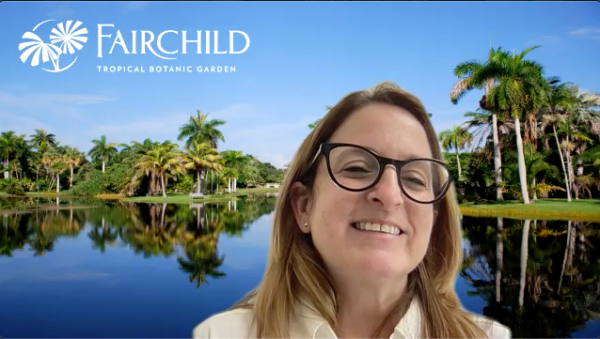
What if YOUR science class could provide valuable data to NASA?
Podcast: Play in new window | Download
Subscribe: RSS
What if they could research new areas–with no “textbook” answers? And, what if students’ ultimate discoveries could benefit astronauts aboard the International Space Station?
That’s exactly the opportunity which Fairchild Tropical Botanic Garden’s Director of Education Amy Padolf has implemented, with Fairchild’s innovative “Growing Beyond Earth” project.
Operating in partnership with NASA, this classroom-based citizen science program engages students in a series of plant experiments. Their goals: to find new crops which could grow effectively aboard the ISS during long-term missions into deep space.
Students use equipment similar to the ISS’s “Veggie” Vegetable Production System. Keeping considerations such as nutrition, taste and the plant’s overall adaptability in mind, they grow their crops throughout the school year. Then, they have the opportunity to present their findings to NASA scientists and researchers, during the annual Student Research Symposium.
Amy says that around 250 schools are currently participating in the “Growing Beyond Earth” project. AND–Fairchild is accepting applications for the upcoming school year!
Amy talked about her background, shared the story of the “Growing Beyond Earth” project and offered a look at some of the ways students have been learning and growing, as they explore!
On this edition of Over Coffee®, we cover:
-
How Amy’s experiences, as a student, led to her passion for botany and education;
-
The story of the “Growing Beyond Earth” project;
-
A look at the participating schools and how the project works;
-
How interested educators can get their schools involved for the coming academic year!;
-
What’s involved for a teacher, as far as a time commitment goes, when participating in the “Growing Beyond Earth” project;
-
Some of the requirements, for successfully growing crops aboard the ISS;
-
One major success, and one major learning opportunity, for the “Growing Beyond Earth” project during the past school year;
-
Some of the impacts of the students’ work;
-
How the project awakened an interest in one teenage student;
-
What the project means to makers (professionals, as well as students!);
-
What’s coming next!;
-
How you can get involved and support the project (which doesn’t have to be strictly financial support!)
